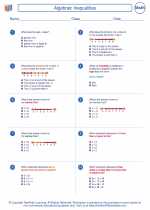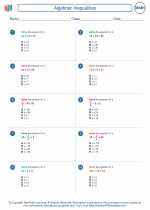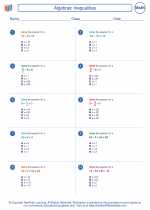Trigonometric Equations
Trigonometric equations involve trigonometric functions such as sine, cosine, and tangent. The goal is to solve for the values of the variable that satisfy the equation within a specified domain.
Solving Trigonometric Equations
There are several methods to solve trigonometric equations:
- Algebraic Manipulation: Rearranging the equation using algebraic techniques to isolate the trigonometric function and solve for the variable.
- Factoring: Factoring the equation to simplify and solve for the variable.
- Using Trigonometric Identities: Applying trigonometric identities such as Pythagorean identities, cofunction identities, and sum/difference identities to simplify the equation.
- Using the Unit Circle: Applying the unit circle to find the solutions of the trigonometric equation.
- Graphical Methods: Graphing the trigonometric function and finding the points of intersection with the horizontal line corresponding to the value of the variable.
Common Trigonometric Equations
Some common types of trigonometric equations include:
- Sine and Cosine Equations: Equations involving the sine and cosine functions, such as sin(x) = a or cos(x) = b.
- Tangent Equations: Equations involving the tangent function, such as tan(x) = c.
- Trigonometric Equation with Multiple Angles: Equations involving multiple angles, such as sin(2x) = d or cos(2x) = e.
Study Guide
When studying trigonometric equations, it is important to:
- Memorize key trigonometric identities and their applications in solving equations.
- Practice simplifying trigonometric expressions using algebraic manipulation and trigonometric identities.
- Understand the properties of trigonometric functions and their graphs, especially the periodic nature of sine and cosine functions.
- Work on various types of trigonometric equations to gain familiarity with different solution methods.
- Review the unit circle and its relationship to trigonometric functions for solving equations involving multiple angles.
Overall, mastering trigonometric equations requires a strong understanding of trigonometric functions, identities, and their application in solving equations within specific domains.
.◂Math Worksheets and Study Guides Seventh Grade. Algebraic Inequalities
Study Guide Algebraic Inequalities
Algebraic Inequalities  Worksheet/Answer key
Worksheet/Answer key Algebraic Inequalities
Algebraic Inequalities  Worksheet/Answer key
Worksheet/Answer key Algebraic Inequalities
Algebraic Inequalities  Worksheet/Answer key
Worksheet/Answer key Algebraic Inequalities
Algebraic Inequalities 

 Worksheet/Answer key
Worksheet/Answer key
 Worksheet/Answer key
Worksheet/Answer key
 Worksheet/Answer key
Worksheet/Answer key

The resources above cover the following skills:
Algebra (NCTM)
Represent and analyze mathematical situations and structures using algebraic symbols.
Use symbolic algebra to represent situations and to solve problems, especially those that involve linear relationships.